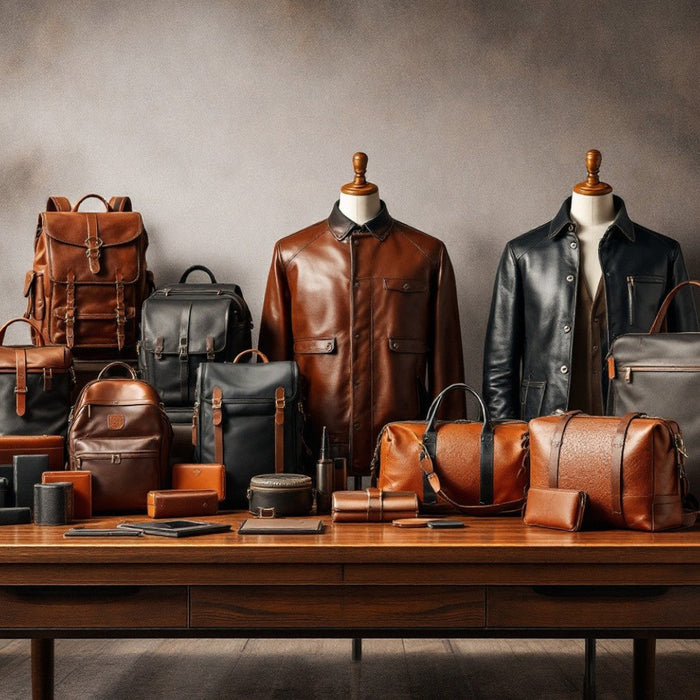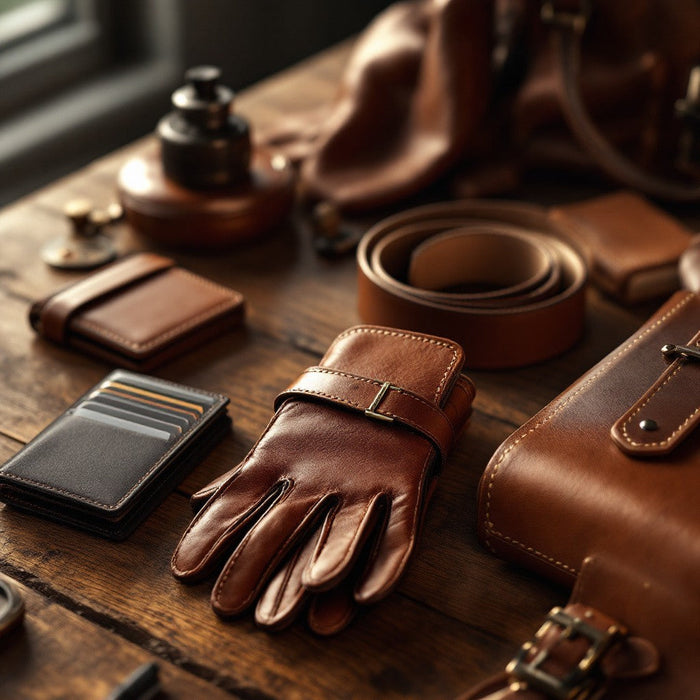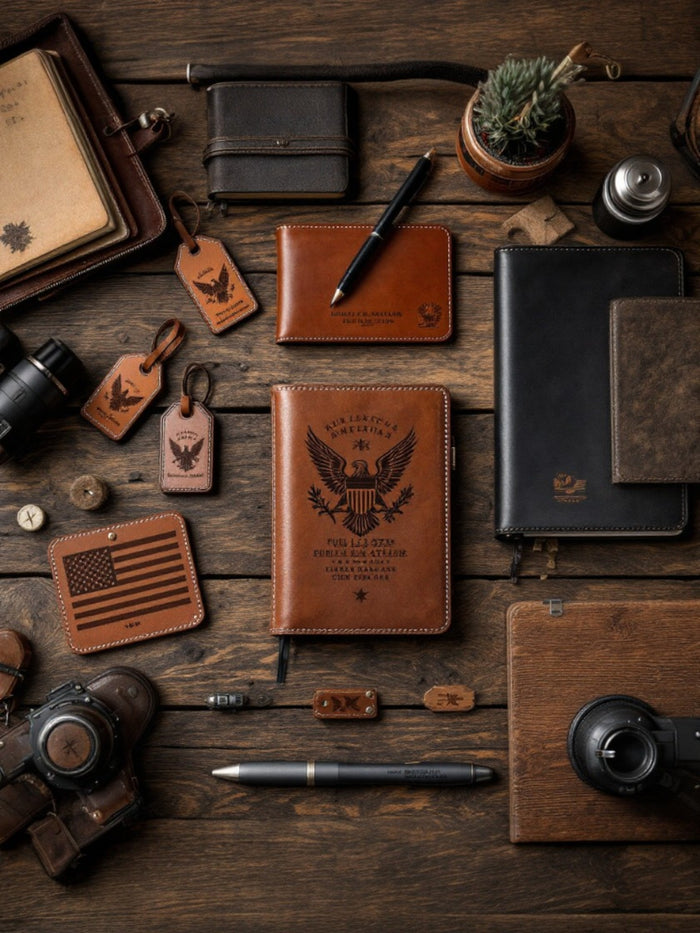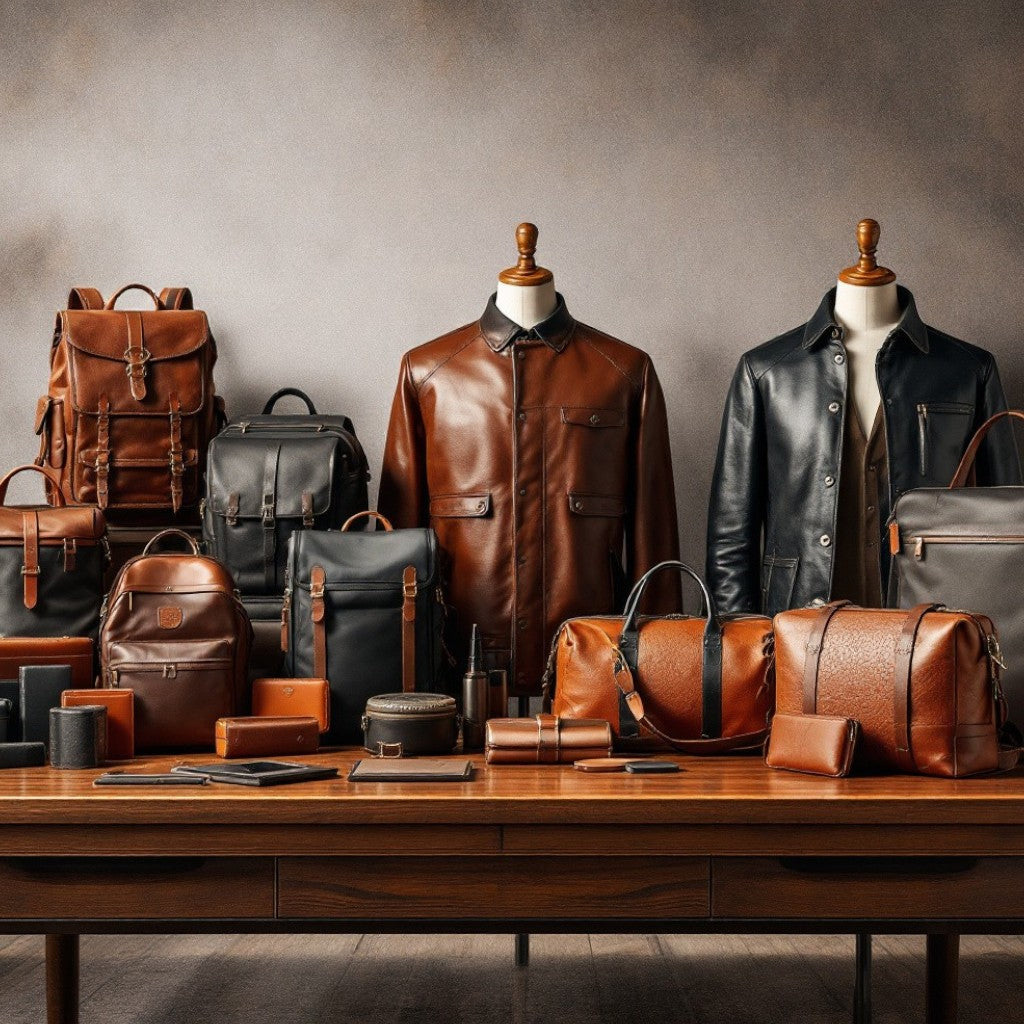
How to Break In & Soften a New Full-Grain Leather Bag — The Wyoming Jack Way
Share
Breaking in a new full-grain leather bag is a lot like breaking in a saddle or a good pair of boots. It’s stiff at first — maybe even a little unforgiving — but give it time and care, and it’ll mold to you perfectly.
That’s the beauty of real leather: it doesn’t just last, it ages with you. Each scuff, crease, and darkened edge tells the story of your travels — from dusty backroads to downtown nights.
But if you’re wondering how to soften a stiff leather bag without ruining it, you’re in the right place. This guide walks you through safe, tried-and-true steps to help your leather break in naturally — keeping its rugged charm and tough-as-nails character.
Why a New Leather Bag Feels Stiff as Saddle Hide
Don’t be alarmed when your new bag feels a little stubborn. That’s how quality starts.
- Full-grain leather keeps the strongest part of the hide intact — thick, durable, and rich with natural oils.
- During tanning, those oils can dry slightly, leaving the fibers tight.
-
It’s not a flaw — it’s proof you’ve got the good stuff.
Cheap leather feels soft right out of the box because it’s thinned, coated, or chemically treated. Full-grain leather takes time — and that’s what makes it timeless.
Step 1: Loosen Up — The Gentle Warm-Up
-
Unpack and wake it up
Pull out any stuffing or inserts. Let your bag breathe for a bit — air and light will help it relax.
-
Flex it, don’t fight it
Work the straps, bend the flaps, open and close it a few times. Treat it like stretching before a long ride — easy, deliberate movements that let the fibers start to move naturally.
-
Skip the heat tricks
No hair dryers. No sun-baked dashboards. No radiators.
Heat kills leather oils faster than a desert wind. Keep it natural — just your hands and room temperature.
-
Carry it light
Throw in a few shirts or a scarf to fill out the shape, then take it for a spin. The more you handle it, the faster it’ll form to you.
Step 2: Condition Like a Craftsman
Every leather bag deserves a good oiling once in a while — but this isn’t a dunk-and-soak job.
-
Choose a quality leather conditioner made for full-grain hides — pH-balanced, no silicones, no petroleum.
-
Test it first. Try a dime-sized amount on the inside or a bottom corner. Let it rest for a full day to see how it absorbs.
-
Apply light and slow. Use a soft cloth, rubbing in small circles. Don’t drown it — leather needs to breathe.
-
Let it rest overnight. Wipe away any extra conditioner in the morning.
🪶 Wyoming Jack Tip: We treat every handcrafted bag in our workshop the same way — a thin coat of conditioner, time to soak, and a little hand flexing. That’s what keeps the leather tough but supple, never greasy.

Step 3: Let Life Do Its Work
The real secret to breaking in leather? Use it.
Carry it on your shoulder, in your truck, through the rain and dust. Don’t baby it — just don’t abuse it either.
Start light: a few essentials, maybe your gloves or a notebook. Then slowly increase the weight. Over time, the leather will stretch, soften, and begin to take your shape — like it was made just for you.
Step 4: Care While It Learns
Even while it’s still breaking in, a little maintenance goes a long way.
-
Dust it weekly with a dry cloth.
-
Spot clean only when needed — never soak it.
-
Condition every few weeks if your climate’s dry (every few months if humid).
-
Store it upright or flat in a breathable dust bag — not plastic.
Keep it out of direct sun and away from damp basements or blazing dashboards.
Common Mistakes (and How to Avoid ’Em)
-
Using heat to soften it faster — big mistake. That’s a one-way ticket to cracked leather.
-
Overloading a brand-new bag — it’ll warp before it settles.
-
Over-conditioning — can make leather heavy and greasy.
-
Letting it sit untouched — it’ll stay stiff longer. Leather needs to live.
When Your Leather Bag’s Finally “Broke In”
You’ll know when it’s right.
-
It opens easy, smooth, no more resistance.
-
The leather feels warm, rich, and pliable.
-
The shape fits your shoulder or hand like an old friend.
-
The patina starts to glow — deep, dark, and handsome.
That’s the sign of a well-broken-in full-grain leather bag — one that’s been lived in, not just owned.
Troubleshooting Stubborn Spots
-
Hard seams or stiff corners: Dab on a touch of conditioner, then flex gently.
-
Uneven softening: Massage the whole bag evenly, not just one area.
-
Tiny cracks or creases: Treat with conditioner early before they deepen.
Wisdom from the Wyoming Jack Workshop
Every hide we use tells a story — and no two are the same. We hand-cut, shape, and build our bags with that in mind.
During construction, our craftsmen warm and flex each panel by hand to keep its natural strength intact. Once it’s yours, the best way to care for it is the same as we do: use it often, condition it lightly, and let it carry the years proudly.
⚒️ For engraved or custom leather pieces, go easy on the conditioner — those areas absorb differently and can darken faster.

Final Thoughts
Breaking in a full-grain leather bag isn’t something you rush. It’s a slow, honest process — like breaking a wild horse or oiling an old saddle.
With patience, good care, and real use, that leather will soften, darken, and mold perfectly to you — tough on the trail, sharp in town.
Let it earn its miles. Let it tell your story.
🐎 Wyoming Jack Leather — Built for the Long Haul. Crafted to Roam.








